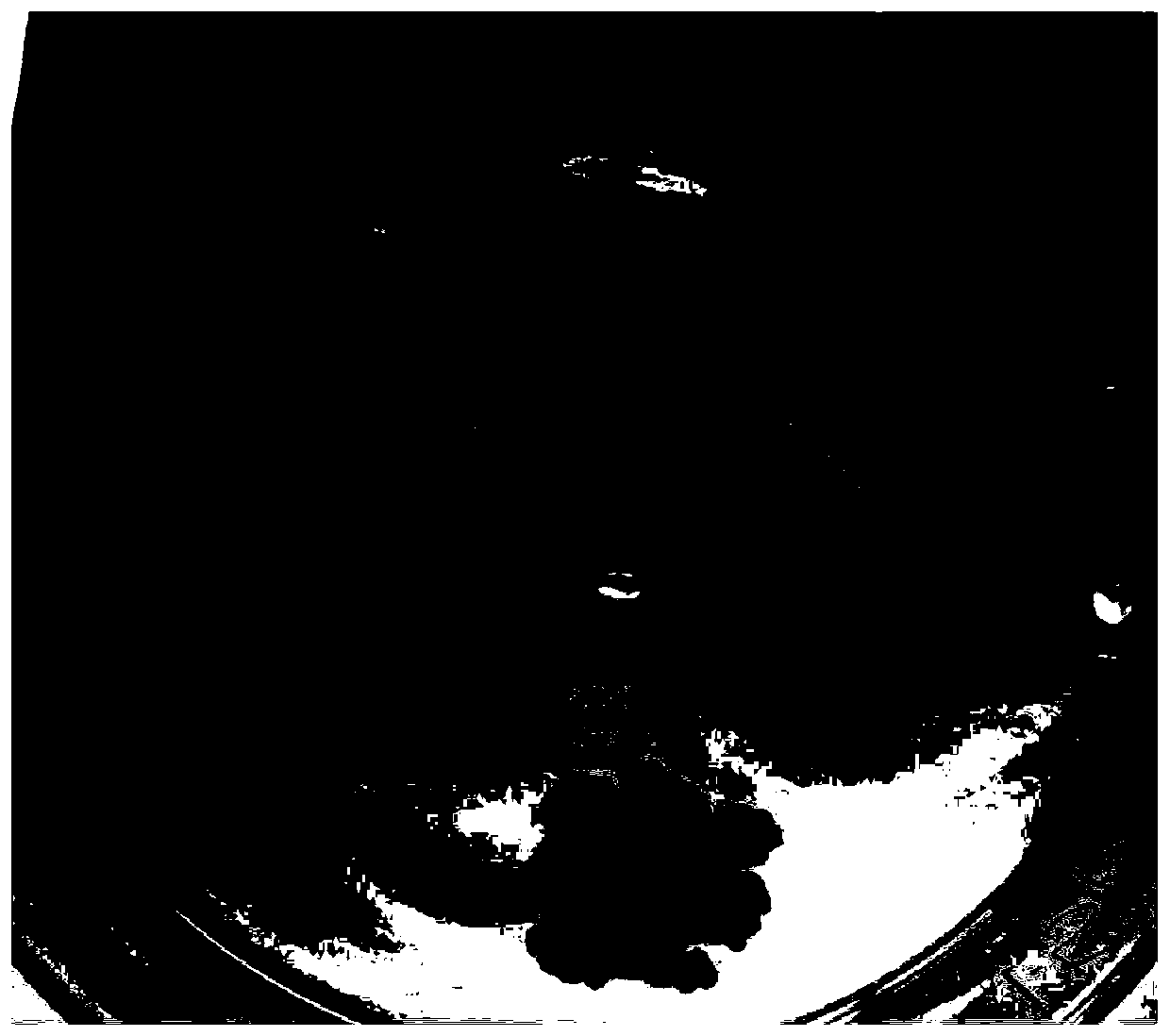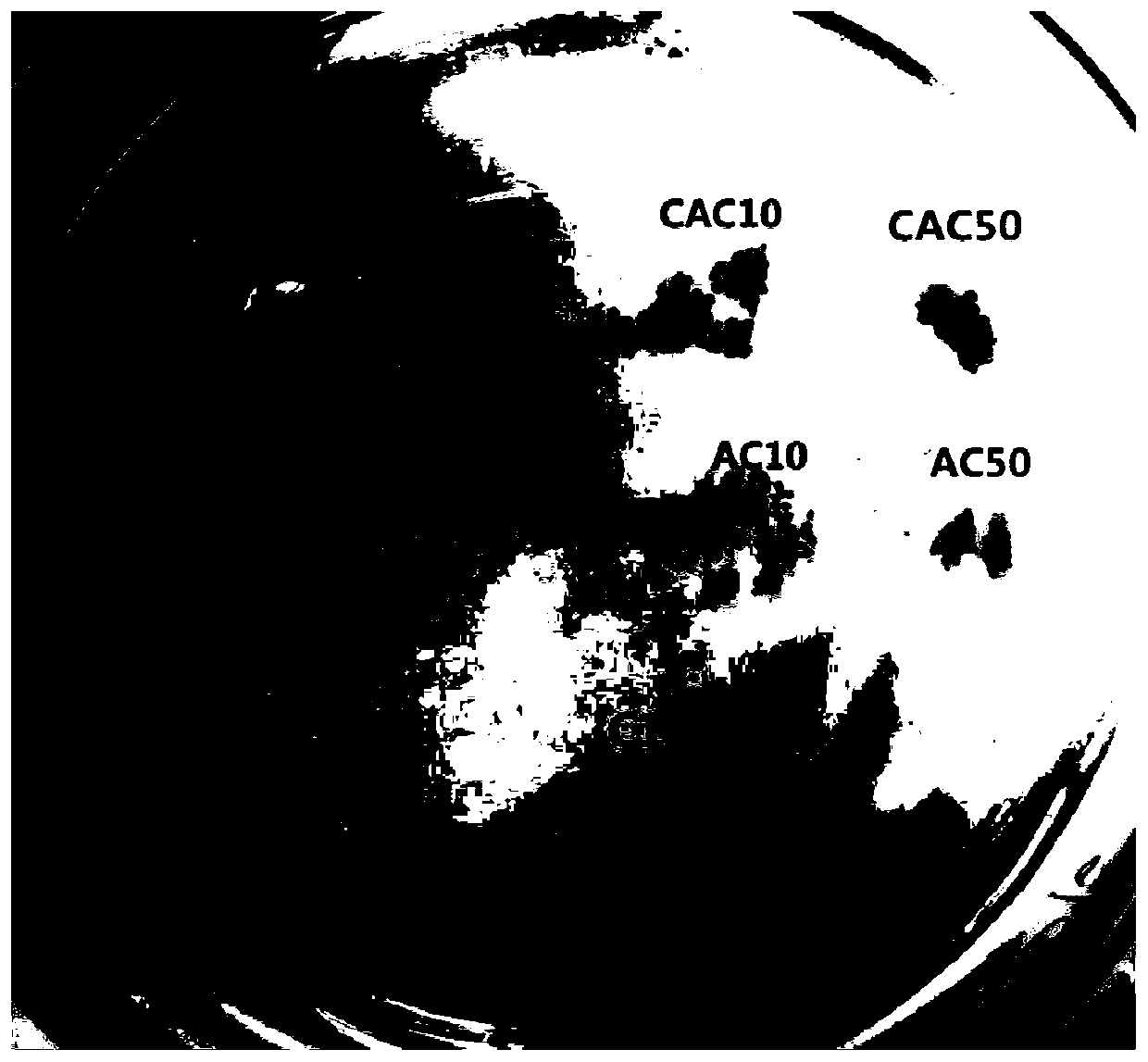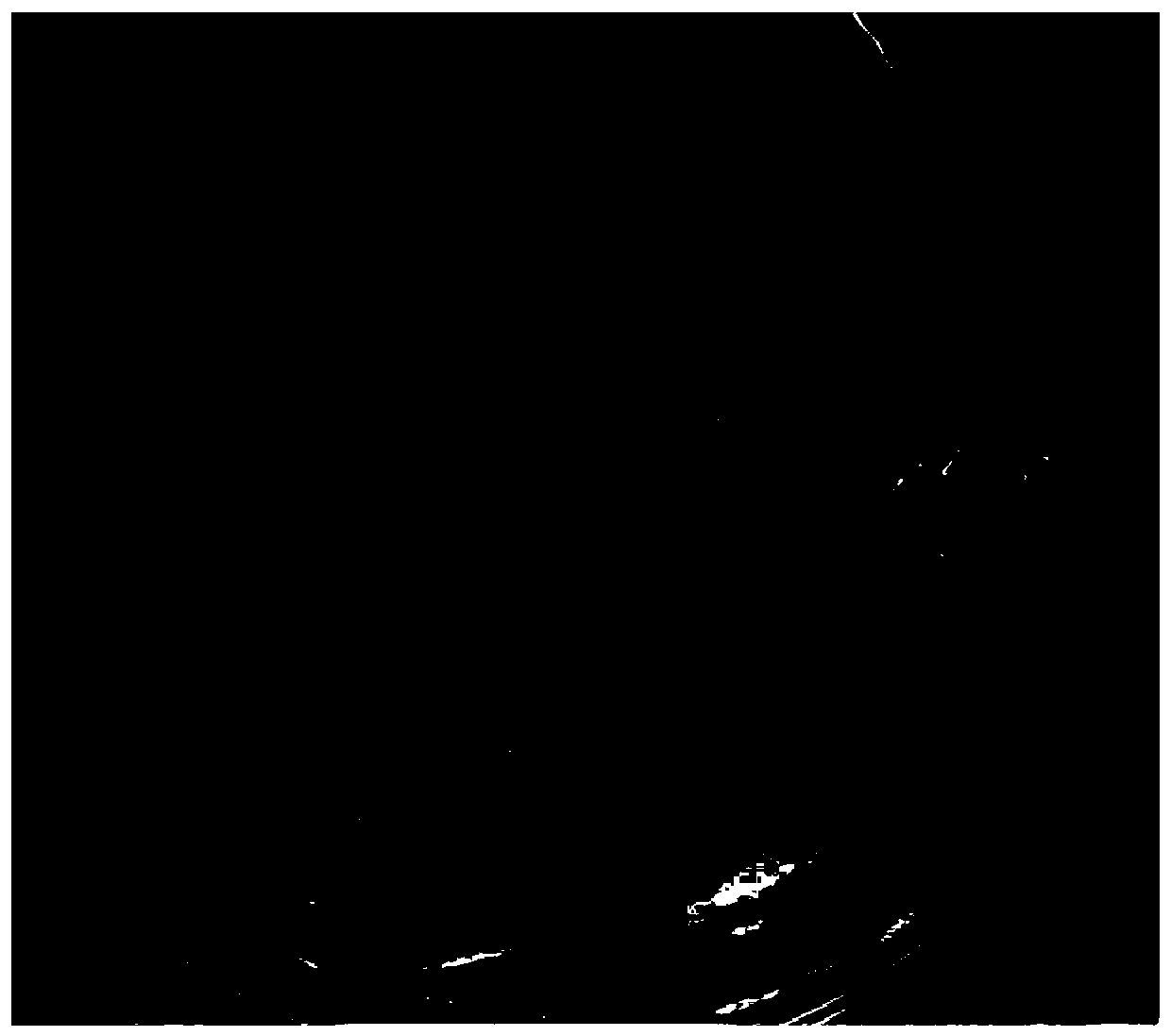Preparation and curing method of sodium alginate-lignin composite gel beads
A technology of sodium alginate and curing method, applied in chemical instruments and methods, other chemical processes, inorganic chemistry, etc., can solve the problems of high price, pollute the environment, high toxicity, etc., and achieve low price, high lignin content, and toxicity. low effect
- Summary
- Abstract
- Description
- Claims
- Application Information
AI Technical Summary
Problems solved by technology
Method used
Image
Examples
Embodiment 1
[0060] (1) Mixed reaction, prepare 1.5% (w / v) sodium alginate solution and 10% (w / v) alkali lignin glycol solution, first stir the sodium alginate solution in a water bath at 80°C for 45min, then press Sodium alginate and lignin mass ratio are the ratio of 2:1 (lignin content is 33.3wt% in the composite bead), lignin glycol solution is mixed with sodium alginate, mixed reaction is carried out under water bath, temperature is Stir at 40 °C for 30 min at 200 RPM.
[0061] (2) To prepare composite coagulation beads, use a 17G flat-tip syringe to drop the mixed solution into 100ml calcium chloride solution (100mmol / L) drop by drop to form coagulation beads, and let them stand for 12 hours to harden.
[0062] (3) Solidification treatment: Rinse the pod after standing and hardening for 12 hours with deionized water three times to remove unbound lignin and salt. Divide the beads into 5 parts on average, and air-dry the first part as the control group, marked as C1. The remaining 4 ...
Embodiment 2
[0068] As shown in Example 1, the difference is that in the mixing reaction step, sodium alginate and lignin are mixed in a mass ratio of 4:1 (the lignin content in the composite beads is 20wt%) to prepare composite beads, and then Coated and cured. image 3 It is a photo of the sodium alginate-lignin composite beads prepared by the preparation method of Example 2 before air-drying. It can be seen that the beads prepared by reducing the proportion of lignin are lighter in color. Figure 4 After 24 hours of natural air-drying, the beads of the control group C1 appeared collapsed and flat, while the beads that continued to be coated and cured compared with the control group, and finally maintained a high-strength microsphere shape.
Embodiment 3
[0070] As shown in Example 1, the difference is that in the mixing reaction step, a 10% (w / v) lignin glycerin solution is prepared, and then mixed in a ratio of 2:1 by sodium alginate and lignin mass ratio (composite coagulation The lignin content in the beads is 33.3wt%) to prepare composite beads, which are then coated and cured.
[0071] Adsorption performance test:
[0072] The prepared C1 group beads were used for the adsorption of Pb(Ⅱ) and methylene blue solution. Add 10mg of absolute dry beads (C1) to 30mL of Pb(II) solution (20mg / L, PH=6.4), adsorb at 20°C and 250rpm for 3h, and the adsorption amount reaches 53.3mg / g. Add 10 mg of absolute dry beads (C1) to 20 mL of methylene blue solution (30 mg / L, PH=6.8), and adsorb at 20°C for 12 hours at 250 rpm, and the adsorption amount reaches 33.3 mg / g.
PUM
| Property | Measurement | Unit |
|---|---|---|
| quality score | aaaaa | aaaaa |
Abstract
Description
Claims
Application Information
 Login to View More
Login to View More - R&D
- Intellectual Property
- Life Sciences
- Materials
- Tech Scout
- Unparalleled Data Quality
- Higher Quality Content
- 60% Fewer Hallucinations
Browse by: Latest US Patents, China's latest patents, Technical Efficacy Thesaurus, Application Domain, Technology Topic, Popular Technical Reports.
© 2025 PatSnap. All rights reserved.Legal|Privacy policy|Modern Slavery Act Transparency Statement|Sitemap|About US| Contact US: help@patsnap.com



